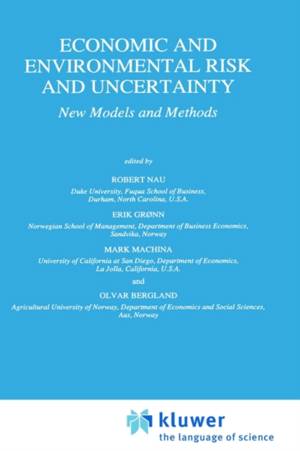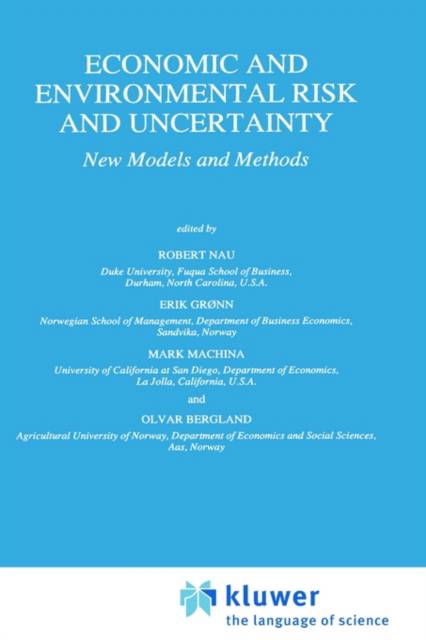
- Afhalen na 1 uur in een winkel met voorraad
- Gratis thuislevering in België vanaf € 30
- Ruim aanbod met 7 miljoen producten
- Afhalen na 1 uur in een winkel met voorraad
- Gratis thuislevering in België vanaf € 30
- Ruim aanbod met 7 miljoen producten
Zoeken
Economic and Environmental Risk and Uncertainty
New Models and Methods
€ 167,95
+ 335 punten
Omschrijving
The 1980s and 1990s have been a period of exciting new developments in the modelling of decision-making under risk and uncertainty. Extensions of the theory of expected utility and alternative theories of `non-expected utility' have been devised to explain many puzzles and paradoxes of individual and collective choice behaviour. This volume presents some of the best recent work on the modelling of risk and uncertainty, with applications to problems in environmental policy, public health, economics and finance. Eighteen papers by distinguished economists, management scientists, and statisticians shed new light on phenomena such as the Allais and St. Petersburg paradoxes, the equity premium puzzle, the demand for insurance, the valuation of public health and safety, and environmental goods.
Audience: This work will be of interest to economists, management scientists, risk and policy analysts, and others who study risky decision-making in economic and environmental contexts.
Audience: This work will be of interest to economists, management scientists, risk and policy analysts, and others who study risky decision-making in economic and environmental contexts.
Specificaties
Betrokkenen
- Uitgeverij:
Inhoud
- Aantal bladzijden:
- 268
- Taal:
- Engels
- Reeks:
- Reeksnummer:
- nr. 35
Eigenschappen
- Productcode (EAN):
- 9780792345565
- Verschijningsdatum:
- 31/05/1997
- Uitvoering:
- Hardcover
- Formaat:
- Genaaid
- Afmetingen:
- 163 mm x 242 mm
- Gewicht:
- 594 g

Alleen bij Standaard Boekhandel
+ 335 punten op je klantenkaart van Standaard Boekhandel
Beoordelingen
We publiceren alleen reviews die voldoen aan de voorwaarden voor reviews. Bekijk onze voorwaarden voor reviews.










